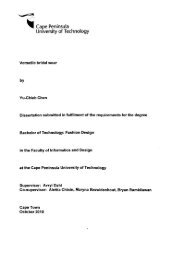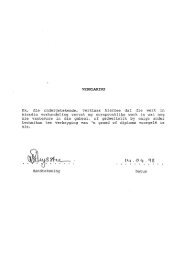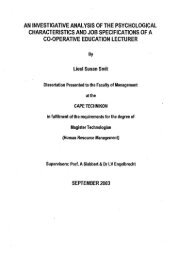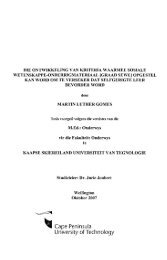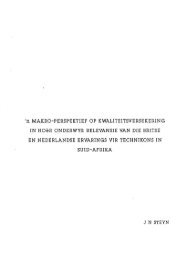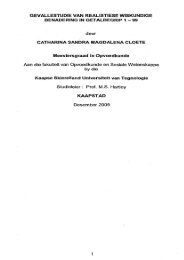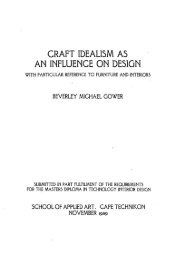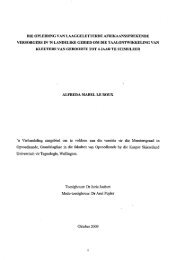E-commerce - Cape Peninsula University of Technology
E-commerce - Cape Peninsula University of Technology
E-commerce - Cape Peninsula University of Technology
You also want an ePaper? Increase the reach of your titles
YUMPU automatically turns print PDFs into web optimized ePapers that Google loves.
Chapter 2: Literature review Page 13<br />
On the customer side <strong>of</strong> the business, the technologies in the table 2.1 can<br />
be used as tools to better satisfy the unique needs <strong>of</strong> their customers. These<br />
e-<strong>commerce</strong> technologies potentially <strong>of</strong>fers new channels for customers to<br />
make purchases (websites), and can improve the in-store experience by<br />
making it more interactive e.g. through touch-screen intranet access, to<br />
display more information about products or to allow customers to browse the<br />
retailers' entire product range (Fisher, 2000).<br />
EOI is used in many sectors but particularly by both small and large retailers<br />
who have the finance available to invest in systems. EOI is mainly used for<br />
ordering and viewing product catalogues/specifications (Browne, Alien,<br />
Anderson, & Jackson, 2001).<br />
According to Birch, Gerbert and Schneider (2000) speed and flexibility are the<br />
key elements for success in e-shopping and these technologies have brought<br />
Birch et aI's view into perspective. VR (Virtual reality) describes the<br />
combination <strong>of</strong> systems comprising computer processing (PC based or<br />
higher), a building platform for creating 30 environments, and peripherals<br />
such as visual display and interaction devices, that are used to create and<br />
maintain virtual environments. In the context <strong>of</strong> VR, the attributes <strong>of</strong> Virtual<br />
environments (VEs) are listed as follows:<br />
• Computer-generated representations <strong>of</strong> real or imaginary<br />
environments; experienced as three-dimensional via a number <strong>of</strong><br />
senses - visual, aural and/or tactile.<br />
• Objects within these environments are independent <strong>of</strong> the user and<br />
can display real world behaviour.<br />
• The user or users have autonomous control - the freedom to navigate<br />
and interact with objects, using a number <strong>of</strong> different viewpoints.<br />
• Interaction occurs in real-time; and the users experience feelings <strong>of</strong><br />
presence and/or immersion.




